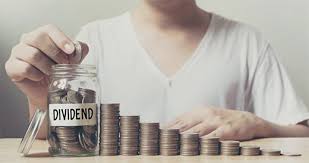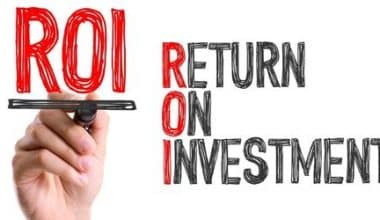Money multiplies more quickly thanks to compound interest, and the more compounding periods there are, the higher the compound interest will be. In this article, we going to provide you with all the information you need on compound interest.
Compound Interest is Defined
compound interest is the interest you earn, simple math can be used to demonstrate this: if you have $100 and it earns 5% interest annually, you will have $105 at the end of the first year. You will wind up with $110.25 at the conclusion of the second year. In addition to earning $5 on the initial $100 deposit, you also made $0.25 on the interest earned on that amount. Although 25 cents may not seem like much at first, it soon adds up. Compound interest means that even if you never add another dollar to that account, in 1 decade you’ll have more than $162, and in 25 years you’ll have almost $340.
The Workings of Compound Interest
The annual interest rate is raised to the number of compound periods minus one, and the initial principal amount is multiplied by both of these factors. The resulting value is then deducted from the loan’s total initial amount.
How Compound Interest Works
Compound interest increases at an ever-increasing rate because it takes into account interest from previous periods. Although the total interest for the three years of the loan in the example above is $1,576.25, the amount of interest is not the same for each of the three years, as it would be with simple interest.
Best Investments for Compound Interest
Here are some of the finest investments to make in order to benefit from the magic of compound interest:
#1. Deposit Certificates (CDs)
Savings instruments like CDs and savings accounts are the best choice if you’re a beginner investor and want to start benefiting from compound interest as soon as possible with the least amount of risk feasible. Bank-issued CDs are financial products that have a minimum deposit requirement and pay interest on a recurring basis.
#2. Accounts with High Yields
In contrast to standard savings accounts, high-yield savings accounts typically have no (or a very low) minimum balance requirement and offer greater interest rates. Money held in a non-interest-bearing account is lost due to inflation and rising interest rates.
One of the main benefits of high-yield savings accounts is that you can earn interest while still enjoying the security and FDIC insurance of a typical savings account (up to $250,000 per account). But, in contrast to the majority of conventional savings accounts, you might need to keep a particular minimum amount in order to get the promised interest rate. Hence, you must be certain that the account you choose is within the restrictions that you are happy with.
#3. Bond Funds and Bonds
Typically, people view bonds as a decent compounding investment. These are essentially loans given to creditors, whether they are businesses or the government. Then, in exchange for the investor purchasing the debt, that person or business commits to providing a specific yield.
Remember that in order for the interest on a bond to compound, you will need to reinvest the principal.
Bond funds can achieve compound interest, too, but would need to be structured to automatically reinvest the interest. The risk involved in bonds will vary.
Compound Interest Accounts
Talking about compound interest it builds gradually but quickly over time. Compound interest accounts often apply interest several times a year, ranging from daily to quarterly and beyond. The complete account balance, including the principal and any accumulated interest, is taken into account when calculating this interest. Interest increases with money, and vice versa.
Compounding frequency should be taken into account while selecting accounts, much like interest rates. This interest accrues more quickly and your money increases faster the more frequently the account compounds. The growth of two accounts with the same interest rate but the differing frequency of compounding will differ.
Compound Interest Accounts Versus Simple Interest Accounts
Simple interest accounts simply pay interest on the initial principal, whereas compound interest bases its calculation on both the principal balance and prior interest.
For instance, a $1,000 simple interest account with a 1% annual interest rate generates $10 in interest income every year based on the initial deposit.
A compound interest account, on the other hand, would likewise finish the first year with a balance of $1,010 with the identical $1,000 investment and 1% interest rate. Yet the following year, the full $1,010 (principal balance plus prior interest) is subject to that interest rate, earning $10.10.
Characteristics of Compound Interest Accounts to Check for
Many savings accounts earn compound interest, but some do it in a way that is more in line with your values and aspirations. Whether you decide to open a CD account, money market account, or high-yielding savings account, they all share a few key criteria that may be important to take into mind.
In general, higher interest rates are preferable because they frequently have greater effects on how quickly your money increases. Yet as you discovered, the frequency of compounding—whether interest is accumulated daily, monthly, quarterly, etc.—is equally crucial. An account with a higher frequency of compounding will normally outperform an account with a lower frequency, all things being equal.
Formula Compund Interest
A = P(1 + r/n) nt, where P is the principal balance, r is the interest rate, n is the number of times interest is compounded annually, and t is the number of years, is the formula for compound interest.
To calculate principal plus interest, this calculator applies the compound interest formula. Using the other known numbers, the same procedure is used to calculate the principal, rate, or time. This formula can also be used to configure an Excel®1 compound interest calculator.
P(1 + r/n) nt = A
- A is the accumulated amount (principal plus interest) in the formula.
- P is the principal sum.
- r is the annual nominal interest rate in decimal form.
- R is the annual percentage rate of nominal interest.
- r = R/100
- n is the number of compounding periods per second.
- t stands for time in decimal years; for example, 6 months are equal to 0.5 years. To get the decimal years, divide your partial year’s number of months by 12.
- I = The interest rate.
- natural logarithm, or
Usage of the Compound Interest Calculator
You will need the numbers for your initial amount, annual interest rate (in decimal form), and the number of time periods in order to utilize the compound interest formula (e.g. the number of years). Let’s examine the computation procedure.
Calculate Compound Interest
Depending on what you can afford, try your calculations with and without a monthly donation of, say, $5 to $200.
A sample rate of return is included in this savings calculator. Compare rates on NerdWallet for thousands of savings accounts and certificates of deposit to see the interest you may anticipate.
For instance, you would earn $101 in the interest the first year, $102 the second, $103 the third, and so on if you placed $10,000 into a savings account at a daily compounded rate of 1%. After ten years of compounding, interest would have accumulated to a total of $1,052.
However, keep in mind that it’s just an example. For long-term investing, certificates of deposit (CDs), Roth IRAs, and traditional IRAs are preferable to savings accounts.
An Example of How to Use the Calculator for Compound Interest
If the value of your investment account increased from $30,000 to $33,000 in the span of 30 months. If your local bank offers daily compounding savings accounts (365 days a year), what annual interest rate must you obtain to match the return on your investment account?
On the calculator above, select “Calculate Rate (R)”. The calculator will be given the equations R = r*100 and r = n((A/P)1/nt – 1)).
- $33,000 in P+I total (A)
- Principal: $30 000 (P)
- a compound noun Daily (365) (365)
- The duration is 2.5 years (30 months equals 2.5 years)
- The following table displays the computation’s outcomes using the formula r = n((A/P)1/nt – 1): =365((33,00030,000)13652.51) =365(1.11912.51) =365(1.10.001095891) =365(1.00010445) =0.03812605 = 100=0.03812605100=3.813%
Your Response R = 3.813% annually
What is Compound Interest Example
See how it functions in practice by looking at these two instances of compound interest.
#1. Condition
Steve reveals to Clara that he stores his cash in a box under his bed. Clara informs Steve that his investments would generate 3.7% income compounded monthly if he followed her investment strategy. In Steve’s box, there is $4,500 in cash. How much interest will he make if he waits five years to invest that money?
Let’s use these figures to finish the compound interest formula. Bear in mind that the percentage rate needs to be converted to a decimal.
I equal 4500[(1 + frac.037 12) (12 dot 5) -1] dollars. $$ \s$$I = 4500[(1.00308)^{60}-1] $$ \s$$I = 911.86 $$
Steve would have more than $900 today if he had put that money to work!
# 2. Condition
Roy wants to invest the $10,000 he possesses. 5.2% annual compound interest is what his bank guarantees. Micah is interested in the long-term performance of his investment. How much interest will Micah have at the end of each year over the following five years? What amount will he have in ten years?
Since interest is compounded annually, n is equal to 1.
In the first year, $$I equals 10000 [(1 + frac.052 1) (1 cdot 1)]. $$ \s$$I = 10000(1.052 -1) (1.052 -1) (1.052 -1) $$ \s$$I = 520 $$
- I = 10000[(1 +.052) 2-1] = 1067.04 in the second year.
- Year 3: I = 10000[(1.052 + 3.11)] = 1642.53 / I
- Fourth year: eqI = 10000[(1+.052)4-1] = 2247.94 eq
- Year 5: I = 10000[(1.052 + 5.1)] = 2884.83 / I
- 10th grade: “eq”
- I = 10000[(1+.052)^{10}-1] = 6601.88 {/eq}
Assuming a 6% annual return and assuming they made their contributions at year’s end.
What are the 2 Types of Compound Interest?
There are normally two types of compound interest.
#1. Periodic Compounding
Using this method on a regular basis, the interest rate is generated. This interest increases the principal. In this context, the terms “periods” refer to annually, biennially, monthly, or weekly.
#2. Continuous Compounding
Using a natural log-based algorithm, this approach calculates interest at the lowest possible intervals. This interest increases the principal. This is equivalent to the constant rate of expansion of all-natural growth. This figure is the result of physics. The well-known irrational number known as Euler’s number, which has an accuracy of more than 1 trillion digits, is used in this formula. Euler’s number is symbolized by the letter “E”.
How Much is $1000 Worth at the End of 2 Years if the Interest Rate of 6% is Compounded Daily?
Simple interest, which simply accrues on the principal, is sometimes represented as a fixed percentage of the principal. In the example below, a depositor opens a $1,000 savings account in order to calculate the interest payment. It offers a 6% yearly percentage yield for the next two years. Use the equation above to estimate the total due upon maturity:
At = $1,000 × (1 + 6%)
2 = $1,123.60
The following computation should be used by potential depositors for alternative compounding frequency (such as weekly, daily, or monthly).
At = A0 × (1 + r
Conclusion
Compound interest is advantageous to investors. Compound interest investments with lower risks, such as CDs and savings accounts, are more likely to provide you with a lower return even though they are safer options. Reinvesting dividends in assets like REITs and dividend stocks can boost your return, but doing so will also raise your risk appetite and test your capacity to tolerate stock market fluctuations. The most important thing to remember is that compounding won’t work if there isn’t a long time horizon.
Related Articles
- SIMPLE AND COMPOUND INTEREST: Difference, Formula and Examples
- THE ANNUAL PERCENTAGE YIELD: How It Works With Your Savings Account
- Future Value of Money: Definition, Formula, and Calculations
- RULE OF 72:Meaning and Formula
- SHARE CERTIFICATE: Overview, Templates, Rates, Formats(+Quick Tool)






